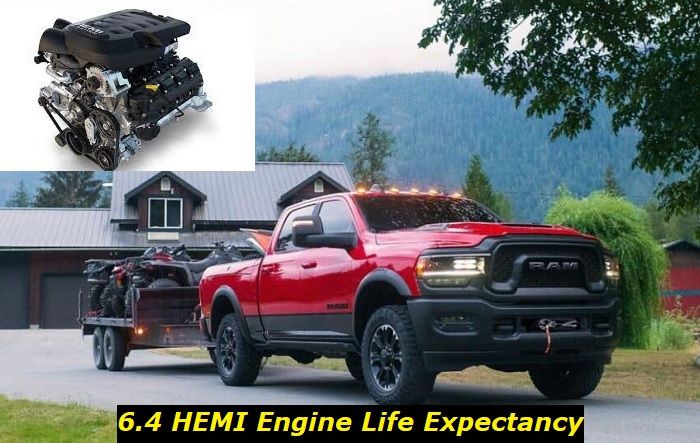How many times were you thinking of your wallet when your vehicle was standing at a red light or in a traffic jam, or you were waiting for someone to come and get into your car with the engine on? Idling vehicles still burn some gas just to keep the engine on, so you lose your money and the environment gets more pollution from the engine in your car.
Today, we'll tell you how much gas a 4-cylinder car use when idling. Also, we'll convert this into money and see how much money monthly you lose when idling. Maybe, after reading this article, you will want to invest in a start-stop car or at least turn off the engine when you are expecting your spouse to join you and go to shops on weekends.

Here's what we are going to discuss:
- Gas consumption when idling in a 4-cylinder engine - let's count.
- How much money are you losing when idling monthly?
- Can you cut the fuel costs if you don't let your car idle for long?
- How to prevent your car from idling when it's not needed?
Let's get started!
Fuel consumption when idling in a standard 4-cylinder engine
An average 4-cylinder engine will have about 2 liters of displacement and 140 horsepower. Engines are becoming smaller now to let manufacturers fit them into new ecology standards. But it doesn't mean that they will burn much less fuel when idling. Unfortunately, the standard idling fuel consumption has been almost the same for the past 30 years in an average 4-cylinder engine.
The average idling consumption is about 0.6-0.8 liters per hour of idling. It's not stable and may change depending on several important factors.
Here are these factors:
- additional accessories in the vehicle - every accessory like radio or lights will demand more electricity that is made by the alternator and the alternator creates loads for the engine to make it consume more when idling;
- the AC - if the AC is on, the compressor will provide the engine with even more load and the idling consumption will go up quite significantly;
- the type of the engine - in some modern powerplants, a couple of cylinders may go off when the engine is on idle and this will save some fuel;
- the type of injection - direct-injection engines usually consume less fuel when idling while older engines with port injection will require more fuel;
- type of fuel - diesel engines are overall more economical and can consume less fuel than gasoline engines, this works for idling consumption, too;
- temperature - when the engine is cold, it will idle at a higher RPM (this is programmed in the ECU) and will consume more fuel than when the temperature is optimal;
- outside temperature - in cold temperatures, the engine needs to produce more heat, so it will burn a little more fuel than when it's hot outside.
There are other factors, too, but they are more or less negligible. For example, the idle speed of different engines may be set on different RPM levels and this will also affect consumption. But it doesn't mean that all engines with lower idling speeds consume less fuel. A whole load of factors will affect this.
You may do little to nothing to change the idling consumption. Your engine just works and is controlled by the ECU when it idles. You can make the idling consumption higher just by pressing the gas pedal and revving the engine up or by turning on your radio or AC. But making it lower is out of your reach.
How much money do you lose monthly when your engine idles?
In a city, your car will idle about 10-15% of driving time. It means that if, on average, you drive 3 hours every day, your average idling time is 20-30 minutes a day. This is the time when you are standing at red lights, in traffic jams, or in other road situations. For some people, it will be more than that, for some - much less. But we are talking about the average.
Here's how we can count the money you lose when idling:
- on average, a 4-cylinder engine will burn about 0.7 liters of fuel every hour of idling;
- but initially, when the engine is cold, the idling consumption will take up to 1.2 liters an hour, so we'll take 0.8 liters an hour as the average;
- you can check the actual consumption using your trip computer - just find the immediate fuel consumption and check it when your vehicle is idling;
- so, on average, you will idle for about half an hour a day in different situations;
- it means that you will spend about 0.4 liters of fuel every day just for idling;
- for an average month with 30 days, it means that you will throw away about 12 liters of fuel;
- as of now, one liter of gasoline in the US costs $1.04 which means you will spend about $12.50 every month idling.
These calculations include a lot of average figures. So, you may want to count it all up with your initial figures. But now you know that if you drive 3 hours a day in an average American city and the fuel price is $1.04 per liter or approximately $3.95 per gallon, you are throwing away 12 bucks a month just idling.
This doesn't seem like a big deal but for one year you will spend almost $150 just sitting in your car with the engine on. This doesn't sound cool. So, we'll come up with some ideas of what you can do with this figure and how to reduce your costs.
Can you save money if you avoid idling?
After you read the first part of our article, you may think it's a cool idea to avoid idling. But is it at all real? It's only possible if your vehicle is equipped with a special start-stop system. But if you want to try to turn off the engine every time you are at a red traffic light or in a traffic jam, just forget about it.
Here are some reasons why it's a very bad idea:
- your safety is questioned, in this case, because you may spend some time starting the car and getting access to all its functions which is risky on the road;
- your comfort is also not guaranteed - the AC or the heater will not work once you turn off the engine, so it may be very uncomfortable;
- the 12V battery will not survive for a long time if it's not an AGM battery that is specially developed for start-stop cars;
- every time you start your engine with a traditional starter motor, it loses a little part of its lifespan, so it's not a really good idea;
- for a startup, you will sometimes use more fuel than you would use for half-minute idling.
So, you see that turning your engine on and off manually every time you stop your vehicle is not reasonable at all. First of all, your 12V battery won't last a year in such circumstances and this fact only makes the idea not lucrative for you. And also, it's very questionable whether you'll manage to save at least some grams of precious fuel doing this.
How can you prevent your vehicle from idling?
Actually, we can't give you any advice that would perfectly optimize your driving and would help you avoid idling for a long time. You can't avoid all traffic lights and intersections, sometimes you need to go through traffic jams, etc.
But you may try something like the following:
- choose better routes for your driving where you aren't likely to stop for a long time;
- use apps that predict traffic intensity on your route;
- don't idle the car for too long when you start and warm up the engine in the morning;
- turn the engine off at all times when you are waiting for someone;
- turn the engine off at all times when you are going to be parked for more than two minutes;
- get a start-stop vehicle the next time you are buying a new car.
If you follow these tips, you will be able to reduce the time of idling. Also, you will save some fuel and will avoid throwing some harmful gases into the atmosphere. But this will still not save you from idling entirely.
Why does my 4-cylinder car burn so much fuel when idling?
Although this topic deserves a full article, we'll give it a small touch here just to let you know why and how this is possible. So, if your vehicle burns too much fuel when idling, there are several things that can lead to this:
- one of the sensors malfunctions - only healthy throttle sensors may prepare proper air-fuel mixture;
- the engine is dying - high-mileage or just heavily used engines may consume more fuel before they completely die;
- there is a problem with the fuel supply - your vehicle may experience issues with injectors, fuel pump, or other parts;
- the ignition system malfunctions - ignition coils or spark plugs don't ignite the fuel, so the ECU sends more fuel to the remaining 3 cylinders;
- problems with compression - if one cylinder fails to work properly (misfires), the engine will normally burn more fuel when idling.
But of course, there are also other issues that can get your idling consumption to 1-1.5 liters per 1 hour. Check this from time to time to make sure that the engine is OK and doesn't need any professional help.
About the authors
The CarAraC research team is composed of seasoned auto mechanics and automotive industry professionals, including individuals with advanced degrees and certifications in their field. Our team members boast prestigious credentials, reflecting their extensive knowledge and skills. These qualifications include: IMI: Institute of the Motor Industry, ASE-Certified Master Automobile Technicians; Coventry University, Graduate of MA in Automotive Journalism; Politecnico di Torino, Italy, MS Automotive Engineering; Ss. Cyril and Methodius University in Skopje, Mechanical University in Skopje; TOC Automotive College; DHA Suffa University, Department of Mechanical Engineering






Add comment